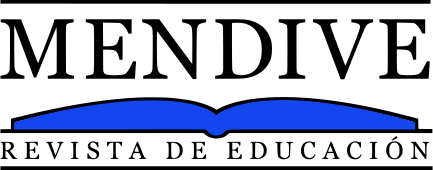
Mendive. Journal on Education, April-June 2025; 23(2), e3860
Translated from the original in Spanish
Original article
Interactive multimedia package on major grains: an innovative educational tool
Paquete de multimedias interactivas sobre granos principales: una herramienta educativa innovadora
Pacote interativo multimídia nos grãos principais: uma ferramenta educacional inovadora
Miguel Antonio Sarmiento Gómez1  0000-0002-8560-9661
0000-0002-8560-9661  miguel.sgomez@upr.edu.cu
miguel.sgomez@upr.edu.cu
Ernesto Miguel Ferro Valdés1  0000-0002-9060-8372
0000-0002-9060-8372  emferro@upr.edu.cu
emferro@upr.edu.cu
Juan Daniel Rodríguez Hernández1  0009-0004-1079-2301
0009-0004-1079-2301  juandanielrodriguez276@gmail.com
juandanielrodriguez276@gmail.com
Eliecer Chirino González1  0000-0002-6105-0509
0000-0002-6105-0509  eliecer@upr.edu.cu
eliecer@upr.edu.cu
1 University of Pinar del Río “Hermanos Saíz Montes de Oca”. Faculty of Forestry and Agricultural Sciences. Department of Mountain Agronomy. Pinar del Río, Cuba.
Received: 2/05/2024
Accepted: 26/04/2025
ABSTRACT
Information and Communication Technologies, when applied to pedagogy, provide avenues
for users to acquire the necessary knowledge. Multimedia plays an important role in this approach
to the pedagogical process. This term refers to the combined use of different communication
tools: text, images, sound, animation, and video. This article aims to promote the multimedia
package on major grains as an innovative pedagogical tool, an alternative to textbooks. The Neobook
5.8 programming platform is used for this project, designed for the development of multimedia
and other software tools. The methods employed were analysis and synthesis, historical-logical
analysis, and surveys. The result is an innovative pedagogical tool that provides students,
professionals, and producers with valuable knowledge about agriculture in general and major grains in
particular. It can be concluded that the interactive multimedia package on major grains constitutes a
tool that facilitates the acquisition of general basic knowledge in an economical and practical
way, thus promoting proper training on said crops (corn and beans), from a more interactive position.
Keywords: agriculture; software; pedagogical; multimedia teaching.
RESUMEN
Las Tecnologías de la Información y las Comunicaciones, puestas en función de la
pedagogía, dota de vías para adquirir los conocimientos necesarios para los usuarios. Dentro de su
enfoque en el proceso pedagógico, la multimedia juega un papel importante. Este término se refiere
al uso combinado de diferentes herramientas de comunicación: texto, imagen, sonido, animación
y video. Este artículo tiene el objetivo de socializar el paquete de multimedias sobre granos
principales como una herramienta pedagógica innovadora como alternativa a los libros. Para este se utiliza
la plataforma de programación Neobook 5.8, la cual está diseñada para el desarrollo de
multimedias y otras herramientas informáticas. Los métodos empleados fueron análisis y síntesis,
histórico-lógico y encuesta. El resultado es una herramienta pedagógica novedosa que pone al alcance
de los estudiantes, profesionales y productores valiosos conocimientos sobre la agricultura en
general y los granos principales en particular. Se puede concluir que el paquete de multimedias
interactivas sobre granos principales constituye una herramienta que facilita la adquisición de
conocimientos básicos generales de una manera económica y práctica, favoreciendo así la correcta
capacitación sobre dichos cultivos (maíz y frijol), desde una posición más interactiva.
Palabras clave: agricultura; programa informático; pedagógica; enseñanza multimedia.
RESUMO
As tecnologias de informação e comunicação utilizadas na pedagogia proporcionam meios
de aquisição dos conhecimentos necessários aos usuários. Na sua abordagem ao processo
pedagógico, a multimídia desempenha um papel importante. Este termo refere-se à utilização combinada
de diferentes ferramentas de comunicação: texto, imagem, som, animação e vídeo. Este artigo
tem como objetivo socializar o Pacote Multimídia Grãos Principais como uma ferramenta
pedagógica inovadora em alternativa aos livros. Para isso, é utilizada a plataforma de programação
Neobook 5.8, que se destina ao desenvolvimento de multimídia e outras ferramentas computacionais.
Os métodos utilizados foram análise e síntese, histórico-lógico e levantamento. O resultado é
uma nova ferramenta pedagógica que disponibiliza conhecimentos valiosos sobre a agricultura
em geral e os principais grãos em particular para estudantes, profissionais e produtores.
Pode-se concluir que o Pacote Multimídia Interativo sobre os principais grãos constitui uma
ferramenta que facilita a aquisição de conhecimentos básicos gerais de forma barata e prática,
favorecendo assim o treinamento correto sobre estas culturas (milho e feijão) a partir de uma posição
mais interativa.
Palavras-chave: agricultura; programa de
computador; pedagógico; ensino multimídia.
INTRODUCTION
Books have played a fundamental role throughout history as vehicles of knowledge,
culture, and wisdom. Since ancient times, books have been guardians of information,
transmitting ideas, thoughts, and discoveries across generations (Brom, 2013)
. With the increase in book production through the printing press, the literacy process expanded rapidly, from millennia
to centuries, and with this phenomenon emerged the possibility of democratizing culture
and learning (Medrano Castrejón, 2023).
The technological revolution experienced in the 1970s constituted the starting point for
the growing development of the digital age; research carried out in the early 1980s allowed for
the convergence of electronics, computing, and telecommunications, enabling
interconnection between networks. Thus, Information and Communications Technologies have become
a strategic sector; their influence has since become increasingly present in the dynamics
of society, and their successes depend largely on the ability to adapt to technological
innovations for their own benefit (Granda Asencio et al., 2019).
In today's knowledge-based society, it is essential for citizens to acquire new skills in order
to respond to the demands of the changes brought about by the constant evolution of
technology. These skills become essential elements of change in the new educational paradigm
(Martínez Clares & González Lorente, 2019). Consequently, education becomes a highly relevant
social sphere, as it must train citizens who will be integrated into current and future society in
the acquisition of these new skills, thus giving the educational system extraordinary
significance (Díaz Garcia et al., 2020).
Higher Education, in its teaching, research and extension functions, considers the promotion
of a teacher capable of teaching their students to learn and think, supported by Information
and Communication Technologies (ICT), as one of its main challenges in the present 21st
century, towards a pedagogical culture that transcends traditional teaching-learning methods to
one capable of training students as critical-reflective and active citizens, with the strengthening
of their life and work skills, which will favor their insertion into the knowledge society
(Caballero Díaz, 2022).
In the field of agricultural education, the existing limitations to effectively fulfilling its
function find a valuable ally in new technologies, such as multimedia resources. These
technologies become key tools for contextualizing knowledge to the different regions of influence of
future professionals, providing them with flexible and comprehensive resources that allow them
to make a significant contribution to society. Furthermore, these tools can be used to
broaden future professionals' understanding of the current situation on the subject, both
internationally and nationally, providing them with a broader and more up-to-date view of the reality in
which they will practice their profession.
In this sense, multimedia technologies offer the opportunity to enrich students' education
by providing them with access to up-to-date and relevant information on the agricultural
sector, both locally and internationally. Thus, future professionals will be able to acquire a
more complete understanding of their field of study and will be better prepared to provide
innovative and effective solutions to the challenges facing society in this area.
This paper aims to promote the multimedia package on major grains as an
innovative pedagogical tool and alternative to books.
MATERIALS AND METHODS
The main grains multimedia package was developed under the Neobook 5.8 system.
Neobook Software is a powerful programming tool that allows users to create interactive
applications without extensive programming knowledge.
With Neobook, users can take advantage of its extensive feature set, including
drag-and-drop capabilities, database support, media integration, custom form creation, and much more.
This programming tool also allows for the creation of applications that run in
Windows environments, making it ideal for developers looking to reach a wide and diverse
audience. Additionally, Neobook offers support for creating cross-platform applications, making it
an attractive option for those looking to expand their reach beyond Windows.
Neobook is widely used by professionals and enthusiasts looking to create
interactive presentations, electronic catalogs, information management systems, multimedia
training programs, educational games, and much more. Its focus on ease of use and ability to
generate high-quality results make it a popular choice for those looking to develop custom
applications without the time and knowledge requirements associated with traditional programming.
Theoretical methods used
- Historical-logical: for the historical analysis of the problem being investigated.
- Analysis and synthesis: for the study of the bibliography and development of the
theoretical framework of reference, in order to select the essential aspects on the topics to be
addressed regarding crops in the multimedia package.
Empirical level methods
- Survey: In this case, a survey was conducted among 50 students and 10 professors in
the Mountain Agronomy Department to determine the degree of preference and acceptance
of the multimedia package.
RESULTS
The multimedia package on main grains was developed in the Department of
Mountain Agronomy belonging to the Faculty of Forestry and Agricultural Sciences of the University of
Pinar del Río "Hermanos Saíz Montes de Oca", by the research and development group of
software applied to agriculture (Figure 1).
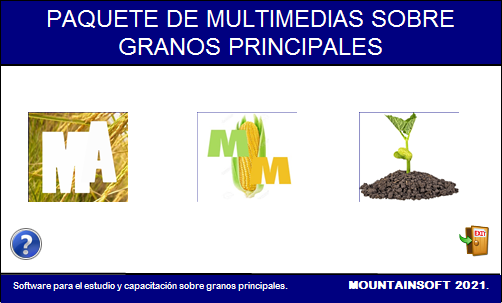
Figure 1. Multimedia package launcher on main grains
It can be used on Windows operating systems, from XP to Windows 10. The minimum
requirements for installation are: listed Windows operating systems, 500 MB of RAM and 50 MB of hard
disk space for installation.
Among the features of the multimedia package on main grains, a small, easily portable
software, is that the first version only takes up 200 MB of hard drive space, so it does not require
large storage media. It can be run integrated into the system, after installation, or portable. It
is multiplatform software, as its great autonomy allows it to run on any Windows operating
system currently in use, even on portable versions via USB. It does not require extensive
requirements, so it can be used on computers with low technological resources. It saves all
printing-related expenses and can be updated periodically. It protects the environment, as it eliminates all
the major damage caused by the printing industry.
Process of programming and creating the multimedia package
Phase 1. Data collection
To gather the necessary information, an exhaustive bibliographic search was conducted
using relevant keywords such as technology, agroecological management, corn, beans,
multimedia, and technological tools. The articles were collected from various renowned databases, such
as Scopus, Google Scholar, and SciELO, which provided essential and supporting information for
the development of the multimedia package.
Phase 2. Application design
The development of the application followed a sequence of steps, from planning to
implementation. Initially, an outline of the application was created, followed by the user interface design,
which defined both its appearance and user interaction. For this purpose, Neobook's design tools
were used to build windows, buttons, menus, and other interface elements. Subsequently, the
application content was generated, including text, images, videos, and audio, organizing it in a coherent
and structured manner.
Once the design phase was complete, programming began, using the Neobook
programming language to add interactivity and program the actions that would be triggered when
interacting with the interface elements.
Finally, during the testing phase, all functionalities were verified to be operational, thus
completing the application's development.
Phase 3. Launch of digital application
During this stage, the application's shortcomings were addressed through a continuous
process of trial and error to ensure its functionality and, crucially, its alignment with the learning
content about the importance of acquiring knowledge about the selected crops (corn and beans).
Regarding the app's launch, its implementation was planned in the San Andrés Mountain
Agronomy Department, with the goal of evaluating both the effectiveness of the scheduled windows and
the knowledge acquisition by users.
The decision was made to evaluate the application's functionality by measuring the level
of satisfaction in the San Andrés Mountain Agronomy Department, the institution where it
was implemented, which yielded the following results.
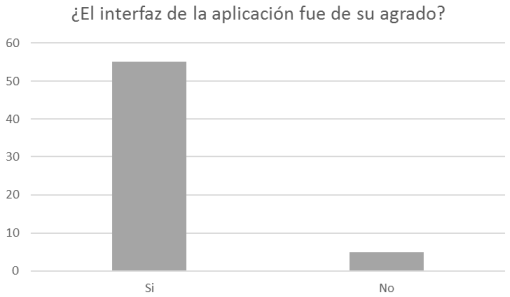
Figure 2. Measuring the impact of application design
Figure 2 shows that 91% of respondents indicate that the application has a
user-friendly interface, easy to use, and as it is an application without an internet connection, it does
not present connectivity problems, which facilitates its use at any academic level.
After a year of research, users at the Mountain Agronomy Department were surveyed
to determine how they acquired crop information (beans and corn), using the
multimedia package in the center's laboratory. The results of this survey are presented in (Figure 3).
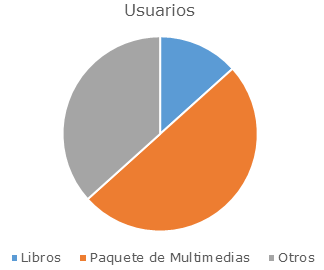
Figure 3. Measuring preferences for information sources
According to the survey, half of those surveyed preferred the multimedia package on
major grains for conducting research and study on corn and bean crops. Thirty-six percent
indicated they used other media, such as websites, Wikipedia, and Google, for this purpose.
The remaining 14% expressed a preference for books as a source of information.
Considering the opinions of the surveyed users, several advantages have been established
over hard copy bibliography (books) (Table 1).
Table 1. Comparison of the interactive multimedia package on main grains on
books, according to current users
Comparison criteria |
Multimedia package |
Books |
Cost |
No costs because the information is chosen from websites and online books, which are free |
It is worth its printing price and if you buy it already published it is worth what the publisher estimates. |
Environment |
It does not directly harm the environment |
It damages the environment because the printing industry emits large amounts of carbon dioxide into the atmosphere, and printing requires many chemicals that are very harmful to nature. |
Update |
It is systematically updated with the bibliographies most recommended by experts. |
To update it, you must purchase or print other types of books, which involves great expense and environmental damage. |
Furthermore, the multimedia package fosters the culture of new trends in
information communication. Today, the use of these technologies is even more necessary because
teaching and learning methods are changing from face-to-face or blended learning to online meetings.
Advantages of using the multimedia package on major grains as a teaching tool
- A striking graphical interface (Figure 4), enhanced with colors similar to those of
crops, makes it very attractive to the user and encourages interaction with the application,
thus increasing the interest and motivation of users for the knowledge presented in
the application.
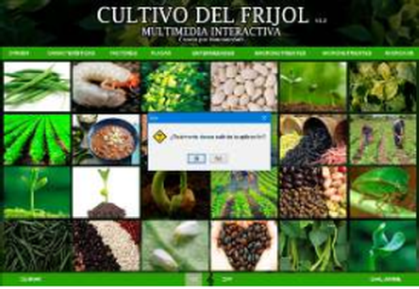
Figure 4. Bean multimedia interface
- Extremely easy to update, as unlike the hard copy format, updates can be done
online using up-to-date bibliographies. This keeps users as up-to-date as possible on
such important crops, efficiently and quickly.
- User-developer relationship: Given the ease of updating, users can ask the developer
to take into account their specific needs in future updates, thus covering the areas
of knowledge that users specifically need.
- Self-assessment: Using the multiple-choice quiz (Figure 5) featuring multimedia,
users can test the knowledge they have acquired during the learning process. They can
also learn from mistakes made in this test, as they can return to the content mentioned
and better prepare for their next attempt, thereby developing feedback.

Figure 5. Multimedia test. Example: corn multimedia
- It features images that make the learning process more interesting and engaging,
especially in the phytosanitary aspect, which is so important for practical use by all
agricultural students.
- The multimedia package on major grains provides comprehensive training for users,
covering subjects such as Genetics, Botany, Soil Science, Plant Science, Plant Health, and
History, among others. It also serves as a guide and provides guidance for users in their
self-preparation, providing encouragement and motivation.
Opportunities for using a multimedia package in teaching major grains
- Interactive Visualization: Using the multimedia package allows students to
interactively visualize the morphology, life cycle, and distinctive characteristics of major grains,
such as corn and beans. This provides them with a deeper and more practical understanding,
as they can observe each stage of crop development in detail through images.
- Access to multisensory information: The multimedia package offers the opportunity
to present information in a multisensory way, involving both sight and hearing. This
sensory variety can improve information retention and student engagement.
- Learning Personalization: The multimedia package allows content to be tailored to
different learning styles. By incorporating visual and textual elements, individual student
preferences can be catered to, providing a more personalized and effective learning experience.
For example, some students may learn better through images, while others may
prefer information presented in written form.
- Geographic Contextualization: The multimedia package includes information on
the geographic regions where the main grains are grown, displaying interactive maps,
panoramic views of agricultural landscapes, and testimonials from local farmers. This
geographic contextualization helps students understand the specific conditions under which each
grain is produced, as well as the associated challenges and opportunities. For example,
images of different corn-growing regions around the world could be shown, highlighting
the differences in climate and soil.
- Stimulating creativity and innovation: Using a multimedia package can stimulate
creativity and innovation by allowing students to explore grain-related concepts in a more
dynamic and experimental way.
Currently, work is underway to develop and incorporate other content on major grains, such
as rice, peanuts, soybeans, and sesame, into this multimedia package to enrich and expand
the package's informational universe.
DISCUSSION
The interactive multimedia package on major grains offers a powerful tool to enhance
student understanding and learning, similar to what
Enríquez Silva (2020) describes in multimedia
for interactive presentations. By combining images and interactive elements, it allows students
to explore grain-related concepts, such as their morphology, life cycle, cultivation
requirements, and economic importance, in a more dynamic and practical way.
This variety of multimedia resources not only facilitates the visualization and understanding
of the topics, but also provides the opportunity to virtually experiment with agricultural
scenarios, identify potential problems, and seek innovative solutions. For Vega (2015), the
multimedia application supports students in the teaching-learning process, in their independence and
self-management. Consequently, students not only acquire theoretical knowledge but also
develop practical skills and a deeper understanding of agriculture, coinciding with what Romero et al. (2005) expressed in a multimedia application for teaching some soil characteristics.
This prepares students to make significant contributions in this crucial field.
Learning through technological tools is motivating, because students do not feel pressure
to acquire content chronologically predisposed according to their age (Chuqui Tandazo et al., 2022).
This perspective is in line with the results obtained, as well as with the criterion
that understands multimedia as a teaching-learning tool that improves the quality of education,
as it breaks the boundaries of space and time. Furthermore, it ensures an immediate
learning effect that enhances traditional teaching tools; this sets the stage for students to
showcase their learning capabilities and innovations, as described in their studies by Mora Piña et al. (2019).
Considerations regarding potential inconsistencies in the methodology of the study on
the interactive multimedia package on major grains are critical to ensuring the validity of
the findings. Some potential limitations could include sample size, follow-up duration, and
the diversity of students and educational contexts. However, despite these potential
limitations, the use of the interactive multimedia package on major grains may be valid due to its ability
to offer an immersive and dynamic learning experience. It not only provides information but
also encourages active exploration and the possibility of self-assessment quizzes, which
can significantly enrich the students' learning process.
An interesting perspective, with which the research agrees, is that of Valdés and Troche
(2022) who express that the current stage, as a result of the Pandemic, has made possible
the redesign of educational programs, with profound substantial changes in the training process
of professionals, being the form of teaching organization that prevails today
(non-face-to-face, distance), which breaks with traditional face-to-face education. Such a situation allows
a greater use of ICT, due to the role of teaching materials in the teaching-learning process
as basic carriers of the knowledge that the student must acquire.
The above suggests that future research should focus on thoroughly exploring the impact
of using interactive multimedia as a teaching tool for students in the agricultural sector. It
is crucial to understand how these tools can enhance the understanding of key
agricultural concepts and promote more effective and meaningful learning in this field.
For this reason, the authors believe that using the interactive multimedia package on
major grains as a teaching tool is an aspect that teachers and students of agricultural sciences
should work on, particularly from a perspective that visualizes its opportunities and advantages.
REFERENCES
Brom, J. (2013). Esbozo de historia
universal. Grijalbo.
https://books.google.com/books/about/Esbozo_de_historia_universal.html?hl=es&id=fTnCAAAAQBAJ
Caballero Díaz, P. (2022). El uso de las TIC como recurso educativo digital de enseñanza
por docentes de carreras empresariales, universidad privada, Asunción, 2020. Revista Científica Estudios e
Investigaciones, 11(1). https://doi.org/10.26885/rcei.11.1.25
Chuqui Tandazo, R. M., García Herrera, D. G., & Erazo Álvarez, J. C. (2022). Gamificación
para fortalecer la lectura comprensiva en niños de diez años. Ciencia Digital, 6(4). https://doi.org/10.33262/cienciadigital.v6i4.2341
Díaz García, I., Almerich Cerveró, G., Suárez Rodríguez, J., & Orellana Alonso, N. (2020).
La relación entre las competencias TIC, el uso de las TIC y los enfoques de aprendizaje
en alumnado universitario de educación. Revista de Investigación
Educativa, 38(2). https://doi.org/10.6018/rie.409371
Enríquez Silva, M. (2020). Características de las herramientas multimedias para el
desarrollo de Presentaciones Interactivas. Revista Ciencia e
Investigación, 5(Extra 1),
873-891. https://dialnet.unirioja.es/servlet/articulo?codigo=7723208
Granda Asencio, L. Y., Espinoza Freire, E. E., & Mayon Espinoza, S. E. (2019). Las TICs
como herramientas didácticas del proceso de enseñanza-aprendizaje. Conrado, 15(66), 104-110. http://scielo.sld.cu/scielo.php?script=sci_abstract&pid=S1990-86442019000100104&lng=es&nrm=iso&tlng=es
Martínez Clares, P., & González Lorente, C. (2019). Competencias personales y
participativas vinculantes a la inserción laboral de los universitarios: Validación de una
escala. RELIEVE. Revista Electrónica de Investigación y Evaluación
Educativa, 25(1). https://www.redalyc.org/journal/916/91664442012/html/
Medrano Castrejón, J. (2023). Reflexión sobre la importancia de la escritura, el libro y
la encuadernación. Espacio
Diseño, 2.
https://espaciodisenoojs.xoc.uam.mx/index.php/espaciodiseno/article/view/2514
Mora Piña, P. F., Freire Quintanilla, M. H., Arévalo Cuadrado, E. P., & Barrera Basantes, R.
L. (2019). Uso de herramientas multimedias en el proceso de enseñanza
aprendizaje aplicado a la educación superior. Polo del Conocimiento: Revista científico -
profesional, 4(12), 188-212. https://dialnet.unirioja.es/servlet/articulo?codigo=9063266
Romero, N., Ríos, M., & Di Salvo, E. (2005). Diseño de una herramienta multimedias para
la enseñanza de algunas características de los suelos de la Cuenca del Río Maracay,
estado Aragua. Enseñanza de las
ciencias, Extra. https://ddd.uab.cat/record/78783
Valdés López, M., & Troche Isalgué, N. (2022). Materiales didácticos multimedias para
la educación no presencial. Santiago, (157), 72-85.
https://santiago.uo.edu.cu/index.php/stgo/article/view/5405
Vega Tapia, A. (2015). Multimedias, herramienta de apoyo al modelo de
aprendizaje autogestivo. RIDE Revista Iberoamericana para la Investigación y el
Desarrollo Educativo, 1(1), 44-77. https://ride.org.mx/index.php/RIDE/article/view/14
Conflict of interest
Authors declare no conflict of interests.
Authors' contribution
The authors participated in the design and writing of the article, in the search and analysis of the information contained in the consulted bibliography.

This work is licensed under a Creative Commons Attribution-NonCommercial 4.0 International License
 0000-0002-8560-9661
0000-0002-8560-9661  miguel.sgomez@upr.edu.cu
miguel.sgomez@upr.edu.cu 0000-0002-9060-8372
0000-0002-9060-8372  emferro@upr.edu.cu
emferro@upr.edu.cu 0009-0004-1079-2301
0009-0004-1079-2301  juandanielrodriguez276@gmail.com
juandanielrodriguez276@gmail.com 0000-0002-6105-0509
0000-0002-6105-0509  eliecer@upr.edu.cu
eliecer@upr.edu.cu





